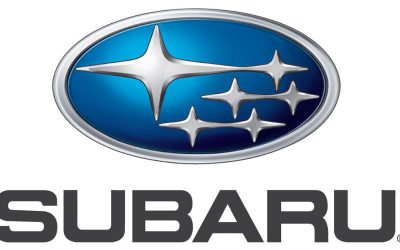You wouldn’t think stricter government regulations on safety and emissions and the need to increase fuel mileage would have anything to do with body work, would you? Guess again. Lighter materials have made it to some Subaru car bodies and here is how we’re going to work with them.
Whether you think government regulations motivated manufacturers to lighten cars, or you feel they lightened them to receive a performance gain, new materials have been used as the automobile has evolved.
Subaru has experimented with using aluminum on a small number of vehicles in its lineup. Hoods and rear deck lids have received the aluminum treatment. Subaru has only used aluminum in recent years, and has not used it on vehicles such as the Forester. The company has moved away from aluminum hoods in an effort to improve pedestrian safety since mild steel has greater energy absorbing characteristics.
The Impreza WRX and STI models use all-aluminum body panels. These have a positive effect on vehicle dynamics. However, they make body work repairs more difficult when accident damage occurs. To keep the body strong and crumple zones predictable, these aluminum panels need to perform like the O.E. panels the manufacturer designed. Also, as these automobiles get older corrosion may become a problem. Taking the correct steps to repair Subaru body panels will assure worry-free performance for years to come. This article will go over proper techniques for dealing with aluminum body panels.
What’s The Goal?
Why use aluminum body panels? In general, steel is three times as dense as aluminum. This does not mean we can make aluminum panels one third the weight. To keep the structure as strong as steel, you can only reduce weight by about 40%. One of the benefits of aluminum is that it conducts electricity
well. Body panels are often used as a ground path for electrical components mounted in the area. Another advantage to using aluminum is its ability to be stamped for body construction. While it is mainly used in sheets for body panels, it can also be extruded or cast depending on the manufacturer’s design.
Aluminum in its pure form, however, is not strong enough to be used as a body panel material in automobiles. In its natural form, it has the necessary yield and tensile strength, but it must be alloyed to increase its stiffness strength. So, other metals, such as zinc, silicon, manganese, magnesium and copper, are added to create useful aluminum alloys. Different characteristics can be produced by changing the quantities of these other metals. For example, the use of more copper creates what is called a 2000 series aluminum alloy. The sheet becomes stronger as well as becoming easier to stamp. Another alloy adds manganese, which increases strength while still maintaining the ability to be stamped, is dubbed a 3000 series alloy. The 4000 series alloys are mainly used for welding since they melt at relatively low temperatures. A unique alloy is the 5000 series. This is made with magnesium, so it is more corrosion resistant as well as stronger. These alloys can be used as structural components for the frame and outer paneling, and also for welding wire. Silicon is mixed with aluminum to form the 6000 series alloy, giving it additional strength. When superior strength is needed, the 7000 series alloys are used. With their zinc content, they can be used in high-stress areas such as bumpers and bumper reinforcements. Currently Subaru only uses aluminum for its hoods and tailgates, but that may change in the future.
You can split aluminum alloys into two groups, non-heat-treatable and heat-treatable. The non-heat treatable group is made up of 3000, 4000 and 5000 series. What this means is you cannot strengthen them with heat. However, these alloys will harden when you work on them. You can anneal them with heat if you need to. Remember, you will not see signs of high heat while annealing them. Use heat-reactive crayons during annealing to tell you how hot the metal panel is getting. Another thing to remember is the metal will become weaker as you put it through more heat cycles.
The heat-treatable group is made up of the 2000, 6000 and 7000 series alloys. Some will strengthen with heat and most will strengthen with work hardening. These alloys tend to have lower melting points, so use care when annealing them. When using heat to straighten an aluminum panel these traits are important. During an accident the damaged part of the panel has become work hardened. When you pull out a dent in this work-hardened panel, you will end up warping the surrounding areas that are not damaged. To make the panel easier to work with you should be heating the damaged area. The process that heats the area surrounding the damage is known as “heat-shrinking.†This causes the aluminum in the surrounding area to expand. If done properly, this should move the metal to its more natural position before the damage in the panel. In the case of more severe damage heat-Shrinking will not be as cost-effective as just replacing the panel with a new genuine Subaru part and then painting it. In the case of hood and rear deck-lids this may end up being the more cost-effective solution in most cases.





0 Comments